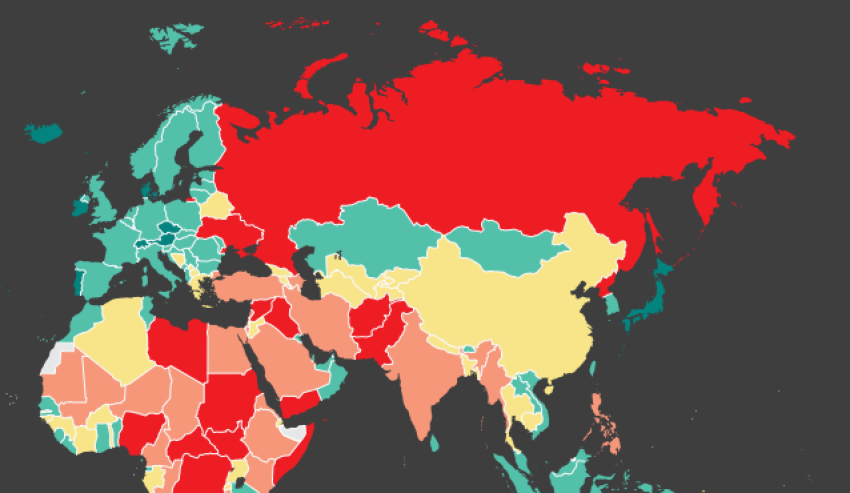The 2018 Global Peace Index (GPI), produced by international think tank the Institute for Economics and Peace (IEP), has found the peacefulness of 92 countries deteriorated during 2016-17, the worst result in the last four years.
To continue reading the rest of this article, please log in.
Create free account to get unlimited news articles and more!
In the 12th edition of the GPI, which ranks 163 independent states and territories according to their level of peacefulness using the level of societal safety and security, the extent of ongoing domestic and international conflict, and the degree of militarisation, has found that the level of peace has fallen by 0.27 per cent in the last year, marking the fourth successive year of deterioration.
The 2018 GPI found that the gradual sustained fall in peacefulness is a result of tensions and conflicts that have arisen in the last decade that remain largely unresolved, particularly in the Middle East.
"Underlying the fall in peacefulness, six of the nine regions in the world deteriorated in the last year. The four most peaceful regions – Europe, North America, Asia-Pacific and South America – all recorded deteriorations, with the largest overall deterioration occurring in South America, owing to falls in the safety and security domain, mainly due to increases in the incarceration rate and impact of terrorism," the 2018 GPI said.
The largest contributors to the deterioration in the last year were the escalations in both interstate and internal armed conflicts, rise in political terror and reduced commitment to UN peacekeeping. Syria, Afghanistan, South Sudan, Iraq and Somalia are considered the least peaceful countries, while Iceland, New Zealand, Austria, Portugal and Denmark are the most peaceful countries.
The report also found that military expenditure as a portion of GDP has been falling in more countries than increasing and the economic impact of violence was $14.8 trillion in 2017 or 12.4 per cent of global GDP – equivalent to nearly $2,000 per person.
Steve Killelea, founder and executive chairman of the IEP, said despite advances in technology and improvements to living standards, improving peacefulness across the globe remains a challenge.
"We have progressed on many fronts in the last decade but reaching greater peacefulness in the world has remained elusive. The challenge is borne out in our research, which shows that it is much harder to build peace than it is to destroy it," Killelea said.
"This partly explains why countries at the bottom of the index remain trapped in prolonged conflict. Ongoing conflicts such as those in Syria, Yemen, Libya and Afghanistan have, in the past decade, contributed towards a significant rise in battlefield deaths, a surging refugee population and an increase in terrorism.
"Europe, the most peaceful region, has also suffered with 23 of the 36 countries deteriorating in peace in the last year, which is predominately the result of increasing political tensions and deteriorating relations between countries."
The indicator with the largest improvement last year was military expenditure as a portion of GDP, with 88 countries spending less and 44 spending more. Average country military expenditure as a percentage of GDP has continued its decade long decline, with 102 countries spending less.

 Login
Login







